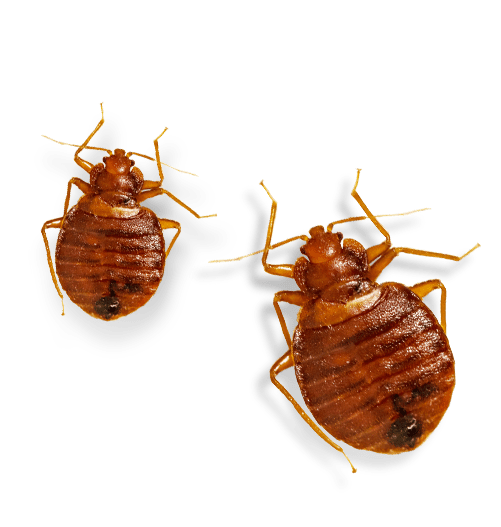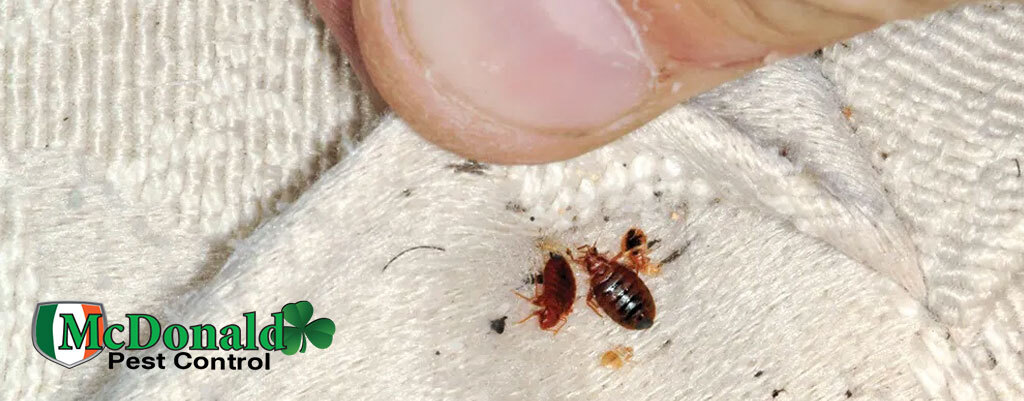How to Recognize Bed Bug Bites and Treat Them Quickly
How to Recognize Bed Bug Bites and Treat Them Quickly
Blog Article
Check Out the Various Sorts Of Bug and Their Therapy Choices for Effective Administration
The administration of bugs in both household and farming setups requires a detailed understanding of the different types that can invade these environments, as well as the treatment options available for reliable control. From house rats that present health and wellness dangers to garden bugs that endanger crop yields, each group requires a customized method. Understanding the nuances of parasite actions and the equivalent treatments is critical; nonetheless, the concern remains: what are one of the most reliable methods that not only address existing problems however also prevent future events?

Typical Household Vermin
Although household pests can vary substantially in type and behavior, numerous share common characteristics that make them an annoyance. Usual household insects consist of rats such as rats and mice, bugs like roaches and ants, and periodic intruders such as crawlers and flies. These pests commonly grow in environments that offer simple accessibility to shelter, food, and water, making homes especially at risk.
Rats, as an example, are well-known for triggering architectural damages and spreading out condition. They can munch via electric cords, possibly leading to fire hazards. Insects like cockroaches are not only disturbing but can also trigger allergies and asthma in delicate people. Ants, while typically harmless, can attack cooking areas, providing food resources uninviting.
Reliable insect monitoring begins with avoidance, that includes securing entry factors, maintaining tidiness, and using appropriate storage approaches for food. Keeping an eye on for signs of problem is essential, as early detection can protect against much more significant problems. When problems occur, various control techniques exist, varying from baits and traps to professional elimination services. Understanding the behaviors and qualities of these common house parasites is essential for effective monitoring and keeping a healthy and balanced living setting.
Garden Parasites and Their Impact
Yard parasites position a substantial risk to the wellness and performance of plants, with some estimates recommending that they can cause as much as 40% of plant losses in particular regions. These insects, that include pests such as beetles, aphids, and caterpillars, as well as nematodes, can inflict serious damages by preying on plant tissues, resulting in stunted growth, minimized returns, and endangered quality.
The impact of garden bugs expands past mere aesthetic issues; they can interrupt ecosystems by altering food cycle, impacting pollinators, and spreading out conditions amongst plants. As an example, bugs like the crawler mite can damage plants, making them more vulnerable to fungal infections. Invasive species may outcompete native flora, leading to biodiversity loss.
Integrated Parasite Monitoring (IPM) practices, which combine organic control, cultural techniques, and targeted chemical applications, can offer sustainable options. By recognizing the details pests and their habits, garden enthusiasts can implement targeted treatments that not just shield their plants however also advertise a healthier yard community.
Rats: Identification and Threats
Rodents are usual yard parasites that can pose considerable dangers to plant wellness and general ecosystem stability. These small creatures, consisting of varieties such as rats, voles, and mice, are often determined by their sharp incisor teeth and durable bodies. Their hair pigmentation varies extensively, varying from gray to brown, and they typically show a long tail which help in balance and agility.
The risks associated with rodent problems are multifaceted. First of all, they can cause extensive damage to plants and yards by gnawing on stems, origins, and fruits, which can bring about considerable financial loss for garden enthusiasts and farmers. Secondly, rats are notorious for their role as vectors of various illness, including hantavirus and leptospirosis, which can be sent to humans and pets. Their droppings and pee can infect soil and water sources, worsening health and wellness threats.
Furthermore, rodents can interrupt the all-natural balance of neighborhood environments by competing with native wildlife for resources. Their burrowing practices can bring about soil erosion and destabilization of plant origins. Early recognition and understanding of rodent behaviors and risks are important for effective bug administration.
Reliable Therapy Techniques
When taking care of rodent infestations, using reliable treatment techniques is essential for minimizing damage and health and wellness risks. Break catches and digital catches supply a quick and humane way to remove rodents, while glue traps can help check task degrees.
Second of all, lure stations containing rodenticides can be purposefully put in areas of high rodent activity. These terminals ought to be tamper-resistant to guarantee the safety of non-target pets and youngsters. It is important to pick the appropriate lure type, as rodents can establish lure aversion if not transformed periodically.
In addition to traps and lure, securing entrance points can considerably reduce the opportunities of re-infestation. This includes checking and fixing voids in doors, home windows, and wall surfaces.
Finally, professional parasite control services can be helpful for considerable invasions. They have the know-how, tools, and products necessary for effective removal and can establish a customized monitoring strategy. By applying these therapy approaches, homeowner can successfully deal with rodent concerns and secure their health and building.
Preventative Procedures and Tips

Keeping sanitation is equally essential; guarantee that food is stored in airtight containers and quickly clean up spills or crumbs. On a regular basis disposing of trash and guaranteeing that compost piles are managed properly can deter pests from being brought in to your home.
In addition, take into consideration landscape design methods that dissuade rodent habitation. Trim back vegetation and keep mulch far from the structure of your residential property, as these can supply concealing places for bugs.
Final Thought
Efficient pest management demands a detailed understanding of different pest kinds and their certain treatment alternatives. Customized methods for house pests, yard bugs, and occasional intruders are vital for enhancing and decreasing dangers control steps. By incorporating efficient therapy techniques pop over to this site with preventative strategies, such as regular evaluations and maintaining tidiness, the likelihood of problems can be considerably lowered. Eventually, a proactive position on pest administration fosters a healthier setting, protecting both residential and agricultural areas from pest-related challenges.
Common home parasites consist of rodents such as rats and mice, bugs like roaches and ants, and periodic invaders such as spiders and flies.Rats are typical yard pests that can present substantial threats to plant health and general ecological community stability. Early identification and understanding of rodent behaviors and dangers are vital for effective insect administration.
Efficient parasite monitoring begins long before an infestation occurs, with proactive measures that can pest specialist considerably decrease the probability of rodent entrance and habitation.Efficient insect monitoring necessitates an extensive understanding of various insect types and their specific therapy alternatives.
Report this page